Silk - Procedure, Properties and Types
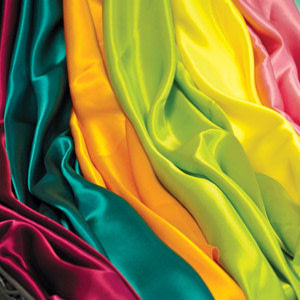
Silk is a natural protein fiber, some forms of which can be woven into textiles. Except silk other protein fibres are weaker than cellulostic fibres. Silk is the strongest and the longest natural fibre. It is produced by a caterpillar called silk worm. To make its Cocoon a substance is extended from its body in one continuous strand from begining to end. It is possible to unwind the Cocoon to obtain silk filament. China is the leading silk producer of the world. Other major silk producing countries includes Japan, India and Italy. Silk is a luxurious and versatile fabric that has been used in fashion design for centuries. It is known for its soft, smooth texture and its ability to drape beautifully, making it a popular choice for high-end garments such as evening gowns, wedding dresses, and suits. Silk is also prized for its natural sheen and luster, which can enhance the appearance of any garment. As a fabric, silk is also versatile in terms of its ability to take dyes and prints, making it a favorite of designers who want to create bold and vibrant patterns. Despite its beauty, silk can also be a challenging fabric to work with due to its delicate nature and tendency to wrinkle easily. However, for designers who are willing to take on this challenge, silk offers endless possibilities for creating elegant and timeless fashion pieces.
Silk Procedure
The life cycle of silk worm encircles in four stages - the egg, the silkworm, the pupa and the moth. A large quantity of silk is produced by "Seri-culture", a method to produce silk by domesticating the silk worm.Seri-culture
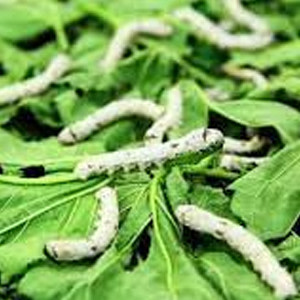
Production of Cocoon for their filament is called Sericulture. In sericulture, the silkworm is domesticated on mulberry trees and after laying of eggs it is collected to give incubation in a mildly warm atmosphere. At the end of 30 days (the time to require hatching of eggs) Silkworm hatches. They are about 1/8th inch. The young Silkworm requires care and carefully controlled diets. Shedded or chopped mulberry leaves are fed to the worms 5 times each day. The area in which worms are grows is kept clean for about a month. The worm grows gradually and the fully grown worms are about 3 inches in length. Only these moths are selected as breeding stock and are permitted to complete the cycle. The Cocoon is formed by silkworm in 2-3 days. The silk worm begins to spin a cocoon by letting out fibroin a gummy material, moving its head in the shape of "8".
Reeling of Silk
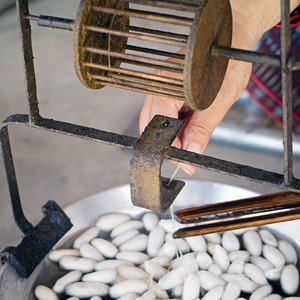
The process of reeling silk is a delicate and intricate art that has been practiced for thousands of years. It involves unwinding the silk fibers from the cocoon of the silkworm without damaging the fiber, and then carefully winding the fiber onto a reel or spindle. This process requires great skill and patience, as the slightest mistake can ruin the entire cocoon. Once the silk has been reeled, it is washed, bleached, and dyed to create the vibrant colors and sheen that make silk so desirable. Reeled silk has been used for centuries to create luxurious fabrics, from elegant dresses and blouses to intricate tapestries and carpets. The process of reeling silk is an important part of many cultures, and continues to be a treasured art form today. The cocoons are sorted according to the color, size, shape and texture. Reeling is the process of unwinding the silk filaments from the cocoon and combining them together to make a thread of raw silk. Several cocoons are placed in a container of warm water, which helps to remove the gummy substance and the filament of silk are removed and filled on reel to form silk. The filament from 3 - 10 cocoons are held together to form a strand of yarn.
Properties of Silk
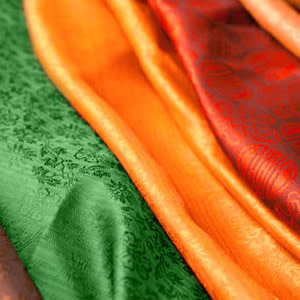
1. Color
The natural color of cultivated silk is off white to cream. A different kind of silk known as Wild Silk is browm 2. Luster
The luster of degummed silk is high but not so bright as manufactured fibres. 3. Environmental Properties
| a) | Moths doesnt harm silk but insects may attack it. Direct sunlight will destroy the fabric. | |
| b) | It absorbs moisture. | |
| c) | It is cool to wear in the summer yet warm to wear in winter. |
Main protein of silk is serisin and fibron.
Silk is known as the Queen of Textiles.
Silkmark
The Silk Mark is a certification mark that guarantees the authenticity of silk products. It is an initiative of the Ministry of Textiles, Govt of India, SilkMark Organisation of India, aimed at promoting the use of genuine silk and protecting consumers from fake or low-quality silk products. The Silk Mark logo can only be used on products that have passed strict quality tests and adhere to the guidelines set by the Silk Mark organization. The mark is a sign of quality, purity, and authenticity, and helps consumers identify genuine silk products amidst the sea of imitations. By choosing products with the Silk Mark, consumers can be confident that they are investing in high-quality silk that has been ethically sourced and produced. The Silk Mark is a testament to the rich heritage of silk production in India, and serves as a symbol of the country's commitment to preserving its cultural and traditional arts.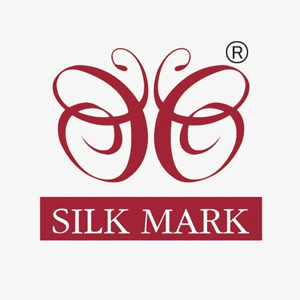 Silk Mark - Ministry of Textiles, Govt of India
Silk Mark - Ministry of Textiles, Govt of India Types of Silks
1. Mulberry Silk
The mulberry silkworm Bombyxmori feed on Mulberry leaves and is the only domesticated silkworm reared indoors.Origin : Karanataka, Andra Pradesh, Jammu & Kashmir, Tamilnadu2. Vanya Silk
The commercially produced Vanya Silks are the Tussar, Eri and Muga produced exclusively by India.3. Tussar Silk
Indian Tussar, copperish in color is produced by the silkworm "Antherea Mylitta" which thrives on Asan and Arjun,out in the open nature. Origin : Orissa, West Bengal, Andrapradesh.4. Eri Silk
Eri also known as Endi or Errandi, with its matt finish is produced by Endi Silkworm Philosamia Ricini domesticatedand reared indoors on castor leaves. Endi is blended with cotton, wool, jute and even mulberry silk to createpremium fashion accessories and home furnishing. Eri Silk is also called as "Ahimsa Silk" because it is obtained from without killing the moth.Origin : Assam, West Bengal, Orissa, Bihar5. Muga Silk
Muga silk obtained from semidomesticated silkworm "Antheraca Assamensis" feeds on the leaves of Som and Soalu plants.Muga is available in different shades of natural gold. Muga silk is generally used in filament form.Origin : AssamMulberry Varieties
- Plain Silk FabricsA range of thin silk to deluxe qualite fabrics ranging from 20 grams to 70 grams are produced in this catagory using both handloom and powerloom. This fabric are available in different shades as well as in checks and strips.
- Dupion FabricsA speciality of Bangalore handlooms produced out of twisted filature warp and dupious weft is available in different quality ranges and shades. Dupion checks and strips are elegant in looks. Mainly used for dress material and cushion covers and furnishings. Dupion is the craze of the west. Dupion is a popular name amoung the overseas silk importers.
- Charka SilkUsing filature in warp and charka in weft a thicker fabric is made on handlooms. For most of the Zari decorative sarees charka yarn is popularly used by the sari manufactures.
- ChiffonUsing highly twisted yarn, a thin but strong fabric is produced on powerlooms, which after processing and finishing attains a soft and smooth texture. Chiffons are used for ladies garments, scarfs etc...
- ChinnonThis is also produced from highly twisted yarn of filature in powerloom. After the final processing and finishing the fabric gets a soft but crimp effect.
- OrganzaA very thin fabric produced from highly twisted yarn. After a starchy finish the fabric gets a rough texture. Organza is used as sari material as well as for embroiderd garments.
- SatinSilk satins are a popular variety of fabric when made into dresses. Satin gives an elegant look. Banarasi satin sarees are popular for export and domestic markets.
- Tabby SilkA type of plain silk fabric produced in Kashmir. Tabby silk is mostly used for printed saress and scarves.
- Murshidabad SilkA popular silk fabric produced in the Murshidabad district of West Bengal used mainly for sarees and scarves.
Silk Care and Washing

- Always wash your silks in soft water. Add a pinch of Borax or Ammonia, if the water is hard
- Use a good soap either in the form of flakes or solution
- To remove soap and solied spots rinse 2-3 times in warm water
- Avoid harsh scrubbing
- Silk with doubtful color fastness may be immersed in cold water with small amount of citric acid or acetic acid for 2 minutes before washing
- Squeeze lightly by hand to remove water
- Do not use washing machine for washing silk products
- Dry in shade without folding (in single layer)
- Dry cleaning is advisible
Storing Silk Garments
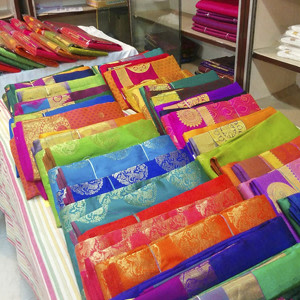
- Store them clean and avoid wrinkles
- Protect from insects, dust, excessive moisture and light
- Avoid direct contact with wood
- Avoid storing in plastics bags and card board boxes
- Use white cotton cloth to cover the silk saree
- Use brown paper cover to avoid blacking of Zari
- Periodically expose your silk to fresh air and dry in sun shade
- Donot use Naphthalene balls and use only Silica gel sachets in storage racks
- Periodically take out your silks, do reverse fold and store it
- If drenched in rain, wash the sarees in plain water immediately
Please leave your comments, we do love it!
Most Viewed Articles
Hey, we have amazing content on the latest Fashion, Trends, Style & Creative Arts, and now it's absolutely FREE for you.All you have to do, is just...We always respect your privacy!
Login / Sign-up


